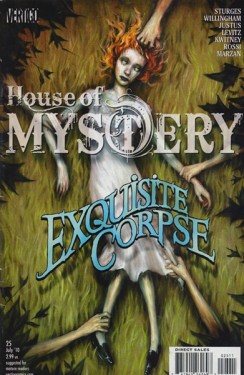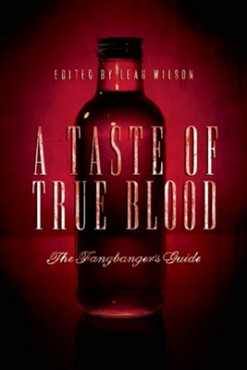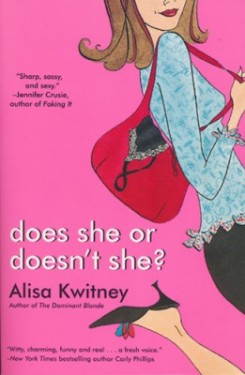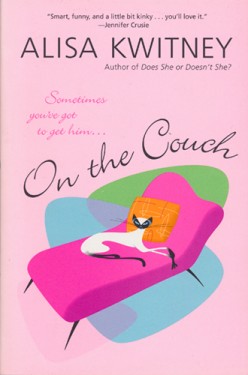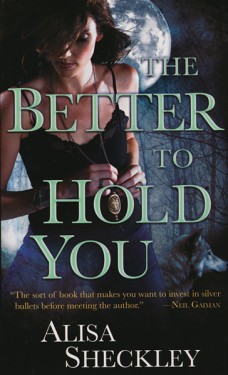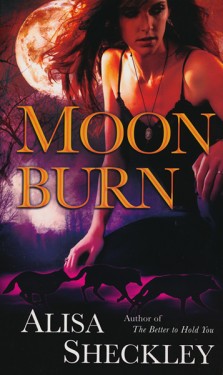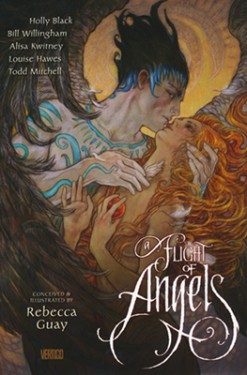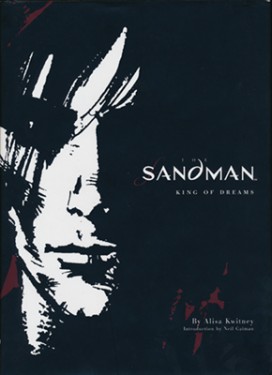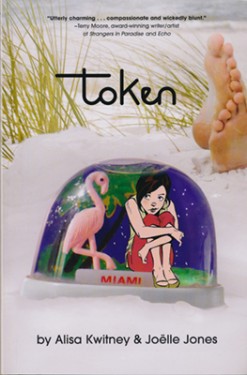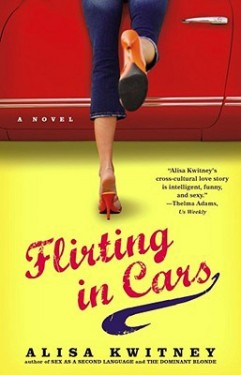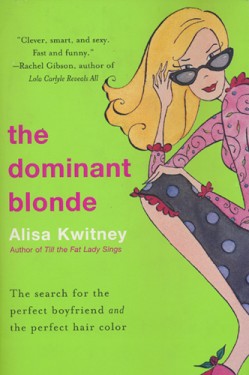Archive for the "For Writers" Category
I’m going to be holding a workshop on Visual Storytelling Techniques (using cinematic and graphic novel storytelling methods to make your prose more vivid, dynamic and compelling) at Fiction Fest this September, in Norwalk Connecticut, courtesy of the Connecticut chapter of RWA. There are other fabulous sounding workshops by folks like Barbara Samuel, Kristan Higgins and Damon Suede. www.ctfictionfest.org
What is romance, and does there have to be a happily ever after?
Originally, a romance was a tale of chivalric love and adventure, in which the hero (always male) never consummated his passion (for a female).
These days, when most people discuss romance stories, they are referring to the genre of novel that burst onto the publishing scene in the 1970’s. Romance comics have an even longer history: They date from the mid-forties.
Romance Writers of America, with the help of writer Jennifer Crusie, came up with this definition of genre romance: A romance is a love story that has an emotionally satisfying, optimistic ending. In an earlier draft, Crusie had suggested “A romance is a love story that ends in emotional justice,” in much the same way that mystery novels end with a sense of moral justice.
You can read Crusie’s full post about defining genre romance here: http://jennycrusie.com/non-fiction/essays/i-know-what-it-is-when-i-read-it-defining-the-romance-genre/
Lately, two romance authors have released books that end in death rather than marriage, and reader response may lead to a redefintion of the genre.
http://www.huffingtonpost.com/mara-white/pill-addicts-bicycle-vigi_b_9039194.html
Some readers are ready to embrace the “better to have loved and lost than never to have loved at all” ending in romance. In an article originally published on ravishly.com and then reprinted on the Huffington Post, Noah Berlatsky explains why she prefers the possibility of an unhappy ending: “The thing I love about romance novels is the way they insist that love and happiness are important and real and true. You can show that insistence by defiantly giving your audience the happy ending. But you can also do it by acknowledging that some stories don’t end that way, while still honoring the impulse to believe that they should.”
You can read her full article is here: http://www.ravishly.com/2015/01/14/happily-ever-after-romance-novels
Romance authors have been challenging other conventions of the genre by writing about male-male pairings and female-male-male menages, but other conventions remain. For example, love interests tend to meet very early in the narrative in order to telegraph the identity of the key couple. Also, adultery and cheating remain mostly taboo.
Here are some other romance conventions.
In a beauty and the beast story, it is never the female who is the beast.
In male female pairings, the stories are told from the female POV or from the female and male POV (in that order).
The main characters’ romantic love must be expressed sexually.
Male/female romances should end with pregnancy or the promise of children in the near future.
I’d love to read stories that subvert these conventions.
For example,how can the main couple express the sensuality and intimacy of their love if they don’t consummate their love physically? In Anne McCaffery’s classic SF novel The Ship Who Sang, the heroine is basically a human brain encased in a spaceship; the hero is her pilot. In Alan Moore’s Swamp Thing comic book series, Abigail Arcane faces the issue of consummation as well, because she loves a swamp creature who is vegetable, not animal. Both writers come up with marvelously creative and satisfying solutions to the question: If sex is not the ultimate intimacy, what other kind of payoff could there be?
And speaking of sex, can erotica be funny? Back when Sex and the City was the hot show about female friendship, Chick Lit novels explored the glamor of working in Manhattan. Now, Broad City (created and written by alums of the improv group Upright Citizen’s Brigade) offers a deliciously raunchy take. (Forget working in an art gallery, like nineties girl Charlotte: Artist Abby cleans out clogged toilets for a health club.)
http://www.out.com/entertainment/2016/2/25/how-broad-city-became-greatest-show-television
As for me, I look forward to reading stories that explore the mystery, adventure, weirdness and occasionally the horror of romantic love, in all its iterations.
What about you? Would you read a book with a heroine in her 50’s — or older? Would you read a story about a recovering drug addict? Would you be stick with a hero or a heroine who committed adultery? And last but not least…does the story have to end with the promise of forever in order to work?
So, I’ve spent the weekend putting finishing touches on my second Batgirl script (translation, trying to make sure I haven’t screwed anything up in the overarching continuity) and now, at last, I think I am done. To celebrate, I am posting some art by the wonderful Rick Leonardi, who is brilliant at pointing out little things that make me think, “Wow, I should really have thought of that.”
Posted August 11th, 2014 — Filed under
For Writers
Tagged — 2 Comments
I was about halfway through Columbia’s Master’s Writing Program in Fiction when it hit me: I still didn’t know how to begin a novel, let alone finish one. Like many aspiring novelists, I had been working on short stories. I had figured someone would show me how to make the leap from writing 5,000 word stories (20 pages) to writing 75,000 word novels (300 pages).
But there I was, about to start work on my thesis, and I still had no idea how to make a story stretch to 20 times the length of the stories I’d been writing. I knew I couldn’t just add more words, because all that would give me would be the never-ending story.
I also knew that I wanted to write a novel while I was in the writing program, because that was why I was spending the big bucks – to learn to write a novel. So what to do?
I picked a mentor novel. It was Puffball, a slim novel by Fay Weldon. I picked the book because a) I liked it and b) there was something about the tone and pacing and style of the book that felt like the stuff I was writing. I felt that this book fit my sensibility, even though the plot and characters weren’t exactly what I would write, and neither were the characters.
And then I used the structure and pacing of Puffball to guide me through the structure and pacing of my novel.
For example, here were the kinds of questions I asked Puffball:
How far into the book are all the major characters introduced?
How many points of view are there?
When does the protagonist’s (main character) main problem get set up?
When does the antagonist’s (character working against protagonist) problem get set up?
When do minor character’s problems get set up?
How quickly does the protagonist’s problem grow into something bigger?
When does the problem become absolutely overwhelming?
What does the protagonist do at this point?
How does the antagonist react?
What is the new status quo as the book ends?
I didn’t use words like “dark moment” and “crisis/climax” and “second act turn” because back then I didn’t know them. Columbia’s MFA program focused on whether fictional events seemed “authentic” or “manipulated” and analyzed whether scenes “worked”. As far as I can recall, there was no formal discussion of three act structure, or instruction about how to set up subplots, or how to resolve them, or when to resolve them.
Puffball, and by extension Fay Weldon, taught me all that. At least, for that novel (Till the Fat Lady Sings, which was later published by HarperCollins). Other books required other mentors. For The Dominant Blonde, which was a crime caper as well as a romance, I used two mentor novels, one a crime caper and the other a contemporary romance. (I can’t recall which ones, but the authors were Carl Hiaasen and Rachel Gibson). I also was inspired by the Fawlty Towers episode, “The Kipper and the Corpse.”
If this is your first novel, however, I suggest picking one mentor novel. It should be a novel you really love, in a style and sensibility that feels native to you. Your novel shouldn’t have the same characters or plot, but should probably be in the same section of the bookstore: YA Fantasy, for example, or romantic thriller, or contemporary women’s fiction.
Then go ahead and use the mentor to show you structure and pacing. In addition to the questions I raised above, you could ask:
How much physical description of characters?
How much scene setting?
How is dialogue broken up by physical actions?
How much is explained about character’s emotions, and how much left for the reader to infer?
What kinds of slang or jargon are used to reveal characters’ backgrounds and make their voices distinct?
Important Note: Of course, the mentor novel is only a rough guide, and your novel doesn’t have to do precisely what the mentor novel does on the exact same page.
Are you picking a mentor novel? Which one?
Come check out the online McDaniel Romance Writing courses,which I am teaching beginning this January, 2015. (The original August start date has been moved to January). I’ll be posting more about my plans for the course, which was last taught by the redoubtable Jenny Crusie. (Jenny’s giving me her notes and has been talking to me about what worked for her.)
Posted June 5th, 2014 — Filed under
For Writers
Tagged — No Comments
It’s really easy, when you’re trying to become a better writer, to screw yourself up so completely that you just stop writing. I know because I’ve done it to myself.
So how do you hone your craft and sharpen your story without losing your mojo?
You take care of the muse, the creative spark, the seeds of inspiration in the subconscious, or what Stephen King calls “the boys in the basement” and Jennifer Crusie calls “the girls in the basement.” About a year ago, the girls in my basement were looking pretty traumatized. I figured my basement needed some work so that it seemed more like a playroom and less like a dungeon. I figured the girls needed some professional help.
Creativity coach Eric Maisel gives week long, intensive Deep Writing workshops in various exotic locales – San Francisco, Paris, Prague…Rhinebeck. I took his course a couple of years ago, (in Rhinebeck, not Paris or Prague) and learned some very useful lessons.
For example: There are thoughts you should not dwell on, even if they are true. A sampling of Bad Thoughts:
Wow, there’s a lot of writerly competition out there.
Writing a novel is hard.
I don’t know if this novel is going to sell.
Damn, the competition is all younger/older than I am.
I don’t know if this is the right novel for me to be working on.
How can you tell when a True Thought is also a Bad Thought? “You can tell what the next energy is after that thought,” says Maisel. “It’s the energy to leave the work.”
Maisel says that just because a thought is true doesn’t mean that you have to entertain it. You may think that you are doing yourself a favor by facing up to the grim fact, but what you’re really doing is terrorizing the girls in the basement.
Maisel’s strategy for derailing those runaway trains of thought: Stop and remind yourself, “That thought does not serve me.”
We can’t always stop ourselves from thinking Bad Thoughts, of course. But we can stop ourselves from pulling them up chair, brewing them a fresh pot of coffee, and giving them a home alongside the girls in the basement.






